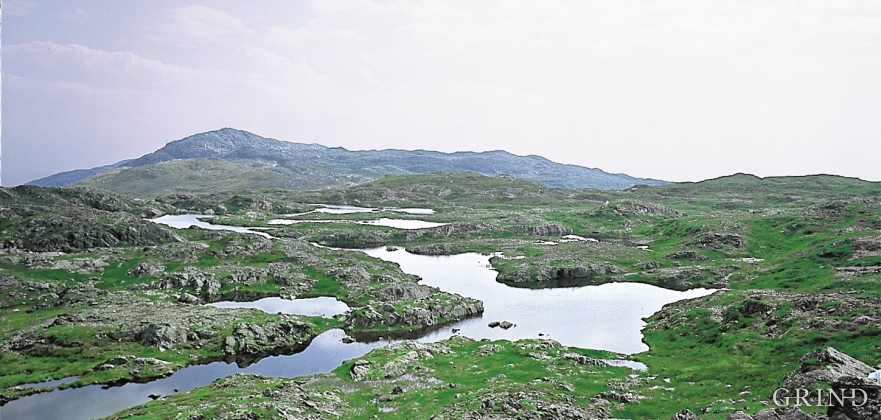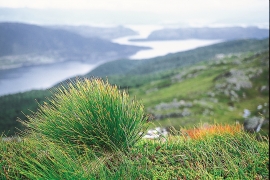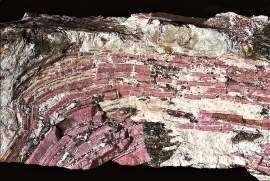Published: 22.07.2015 | Author: Bjørn Moe
From Grønafjellet toward Kattnakken. (Svein Nord)
MOUNTAIN PLANTS FAR TO THE WEST
Mountain plants with their beautiful, colourful flowers are common in high altitude areas in Norway. On the coast there are not so many of them. But, here and there one nonetheless finds mountain plants, and this makes some coastal mountainsides a little bit different. Perhaps the growth on these mountainsides gives us a little glimpse of a distant past?
Grønafjellet is just such a mountainside. The mountainside here is the easterly part of a larger mountainous region in Fitjar. Mountain avens is the most stunning of these mountain plants. With its big, white flowers, it is a beautiful sight, especially in early June. There are also other alpine species that grow especially where the gabbro is a bit crumbly and gravelly. Moss campion and alpine bartsia belong to these. Other parts of Grønafjellet are more barren with moors, where only a few species are able to make a living.
The alpine plants probably came to Grønafjellet quite early. Perhaps some of the first plants put down roots just as the coastal area in the west became ice-free roughly 15 000 years ago. The glacial surge in Younger Dryas times (the period is named after mountain avens, since it has the word "Dryas" as its generic name: Dryas octopetala). about 12,000 years ago did not reach this far west. One can therefore presume that these hardy alpine plants managed just fine during this cold period. Many mountain species have probably disappeared because of the unfavourable climate with warm periods and too dense vegetation in the 11 000 years that have passed to reach our time. But, on Grønafjell the mountain avens survived, and dwarf birch and other alpine species have also right up until today.
Pink tourmaline
In the tysnes gabbro that covers the northeasterly part of Fitjar, a granitic magma and hot liquids forced their way in when the austevoll granites were intruded 430 -440 million years ago. Some of these created pegmatite sills - sills with large mineral crystals, first and foremost feldspar, quartz and mica. In the mountains of Fitjar in 1997, student Ståle Raunholm found a special, iron-poor pink tourmaline named rubelite. This stone is of economic interest in the mineral collector's mileu, even though it is not of gem quality. The oblong crystals became bent and partly broken into bits during the Caledonian continental collision.
- Gaarder, G.; Moe, B.2000. Steinbrudd på Raunholm. Konsekvensutredning på tema Dyre- og planteliv. Miljøfaglig Utredning, rapport 6.
- Meyer, O. B. 1983. Fjellflora og –vegetasjon på Stord og Tysnes. Hovedf. oppg. UiB.Botanisk institutt.
- Sørheim, K. 1969. Floraen på Stord. Eige forlag.






